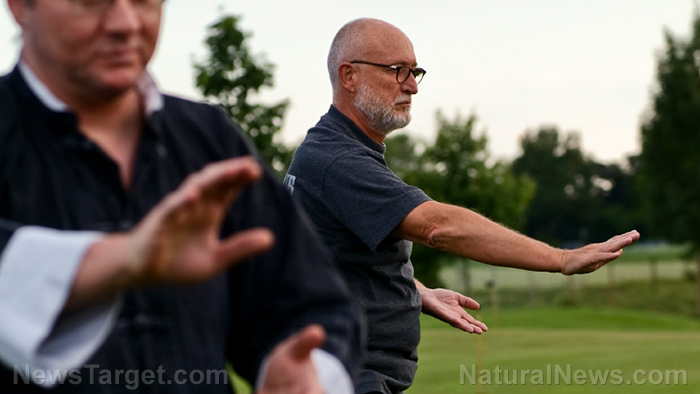
Fibromyalgia is a complex disorder in which people with this condition suffer from widespread musculoskeletal pain, fatigue, sleeping problems, and prominent physical and psychological impairment. (Related: Tai chi benefits people with chronic health problems like Parkinsons, arthritis and fibromyalgia.)
In the study, researchers from Tufts University in the U.S. examined the effectiveness of tai chi interventions compared with aerobic exercise in the treatment of patients with fibromyalgia. Aerobic exercise is the current standard care for the management of fibromyalgia. They also evaluated whether the effect of tai chi depends on its dosage or duration.
For the study, they recruited 226 adults with fibromyalgia. One hundred and fifty one of these were assigned to one of four classic Yang style supervised tai chi interventions conducted once or twice every week for 12 or 24 weeks. The 75 other participants were assigned to supervised aerobic exercise twice a week for 24 weeks. In addition, the participants completed a fibromyalgia impact questionnaire (FIQR) after the interventions.
The results revealed that all treatments improved the symptoms of fibromyalgia and did not cause any side effects. However, tai chi interventions caused more improvements compared to aerobic exercise. Participants who performed tai chi experienced greater benefit than those who performed aerobic exercises in the same intensity and duration. Moreover, the longer tai chi is performed, the greater the benefits are, as results showed that those who performed tai chi for 24 weeks demonstrated greater improvements than those who performed it for 12 weeks. Participants also attended the tai chi training sessions more frequently than participants attended aerobic exercise.
Based on the findings of the study, the researchers concluded that tai chi is better for managing fibromyalgia and that performing tai chi for a longer period results in greater benefits.
More on tai chi
Tai chi, often described as meditation in motion, is a low-impact, slow-motion exercise that benefits both the mind and body. Tai chi is different from other types of exercises in some aspects. One of these is that the movements in tai chi are typically circular and never forced. When performing tai chi, the muscles are relaxed, not tense, the joints are not totally extended or bent, and connective tissues are not stretched. Tai chi addresses the primary components of fitness:
- Muscle strength: Tai chi can enhance both lower-body strength and upper-body strength. It also strengthens the core muscles of the back and abdomen. Regular practice of this type of exercise can be comparable to resistance training and brisk walking.
- Flexibility: In addition to improving strength, tai chi can also enhance flexibility both in the upper- and lower-body.
- Balance: Some studies have shown that tai chi improves balance and reduces falls. Tai chi helps enhance proprioception, the ability to sense the position of one's body in space, which declines with age. It also makes it easier to get back up from a stumble because it enhances muscle strength and flexibility as well. Several studies have also suggested that tai chi can help reduce the fear of falling, which can make you more likely to fall.
- Aerobic conditioning: Tai chi also offers some aerobic benefits, but the effects depend on the speed and size of the movements.
Read more news stories and studies on tai chi and other mind-body interventions by going to MindBodyScience.news.
Sources include:
Please contact us for more information.























